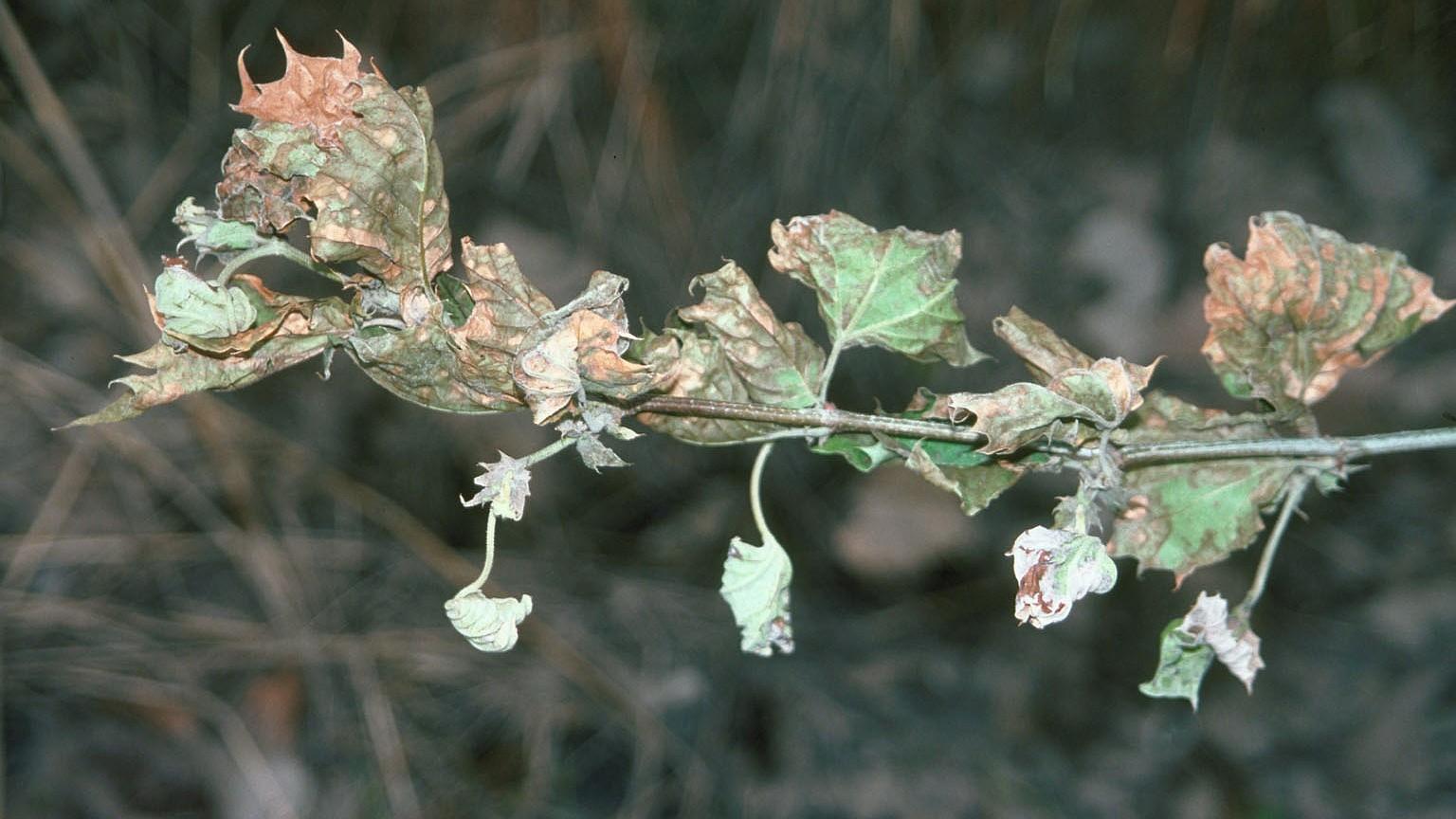Herbicides are products designed to kill undesirable plants but sometimes misapplied herbicides or drift (movement of an herbicide on air currents) can cause injury to desirable landscape plants.
New growth is especially sensitive to herbicide injury.
Symptoms of some commonly misapplied herbicides
- Symptoms of herbicide injury can include discolored or distorted leaves and can easily be confused with some weather-related injury or symptoms of improper care, as well as insect, mite, and disease problems.
- The amount of damage depends on the overall health of the plant, the kind and amount of herbicide absorbed, and the plant conditions after the exposure.
- 2,4-D and MCPP (found in many lawn herbicides) - Twisted and deformed shoots, leaves, and petioles (stalk that connects leaves to plant stems).
- Dicamba (lawn herbicide) - Dwarfed, distorted, and/ or discolored foliage.
- Glyphosate (non-selective herbicide) - Plants stop growing, remain green for several days, may develop yellow leaves, then turn to a uniform brown. Plants treated in the fall may not show symptoms until the following spring. Leaves on new growth may develop abnormally, with a stunted, narrow, or closely packed appearance, called witches-brooming.
- Trifluralin (preemergent herbicide for planting beds) - Roots may be swollen or club-shaped, roots may appear shortened with fewer secondary roots present.
- Some herbicides are more readily absorbed through plant roots while others are only absorbed through leaf and stem tissue. Tissue and soil analysis for herbicide residues is often not available, impractical, or very costly.
Management
- Damage can range from severe and possible plant death to the plant outgrowing the damage and recovering.
- If it is known that the plant was sprayed by an herbicide, an immediate hosing of the foliage with water can reduce the damage. But, if the herbicide was absorbed by the plant it cannot be rinsed off.
- Deeply water damaged trees and shrubs if needed.
- Wait to see if the plant outgrows the damage. Damaged branches and stems can be pruned out but in some cases, the plant will have to be replaced.
